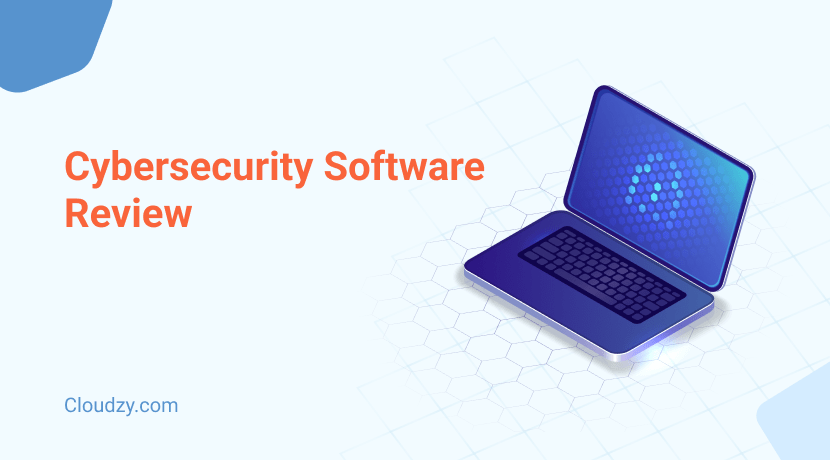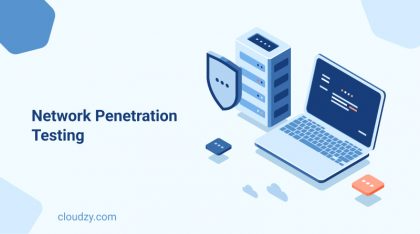In an ideally benevolent world, security would be the last thing you’d invest your time, money, and resources. However, as you keep your valuables in a safe and lock your doors to minimize the risk of theft and intrusion, you must take measures to ensure the security of your data and digital assets remains uncompromised.
You can use various strategies to increase layers of defense, safeguard sensitive data, prevent financial and reputational damage, and reduce the headaches of running a business. One of the most important boxes to check in this regard is investing in cybersecurity software.
As the tools for strengthening your lines of defense evolve, so do the tactics and schemes cybercriminals deploy to infiltrate your network, compromise sensitive data, and disrupt your entire operation before you even realize what’s happening. With the emergence of AI-powered attacks, complex ransomware, and sneaky phishing scams, the stakes are higher than ever. Because of this, it is of utmost importance to use up-to-date strategies that suit your organization’s infrastructure.
The most optimal cybersecurity software can vary depending on your organization’s scale, the types of digital assets you use, and your budget. A pricey SSPM (SaaS Security Posture Management) can be great for cloud-heavy architectures but can prove fruitless for companies with on-premise infrastructure.
While there’s no one-size-fits-all solution, some options on the market have gained reputations for excelling at providing competent security in different fields. In this post, I’ll walk you through some of the best cyber security software you can use to address various aspects of security management.
Nessus (VAPT)
Short for Vulnerability Assessment and Penetration Testing, VAPT refers to techniques used to identify and assess system vulnerabilities and simulate real-world network attacks to exploit these weaknesses. Tenable’s Nessus has become a well-recognized platform for comprehensive IT vulnerability assessments.
Due to its scalable architecture, Nessus can be used for small- and medium-sized businesses and all the way up to global enterprises.
Pros:
- Nessus offers a vast vulnerability detection coverage.
- It is accessible to users with varying levels of technical expertise.
- It provides accurate reporting and visualization features.
Cons:
- Licensing can be quite expensive, especially if you opt for multiple licenses in the subscription plan.
- Nessus requires a lot of resources to operate, which can potentially impact system performance during scanning.
Wiz (CSPM)
As one of 2024’s most acclaimed cloud-native application protection platforms, Wiz is an award-winning tool that excels at Cloud Security Posture Management (CSPM). CSPM refers to a broad category of cybersecurity measures that includes different aspects, including SaaS Security Posture Management. A CSPM tool is generally responsible for continuously monitoring cloud infrastructure for misconfigurations, compliance violations, and security risks, ensuring that cloud environments remain secure and aligned with best practices.
Wiz is primarily intended for large enterprises due to its focus on complex security and multi-cloud environments. The company quotes a price based on your organization’s scale, needs, and environment.
Pros:
- Wiz operates without an agent, simplifying deployment and reducing performance overhead.
- The interface is user-friendly and provides all analytics on a single platform.
- With real-time alerts regarding data leaks and other vulnerabilities, Wiz is considerably responsive and quick in security management
Cons:
- Since it is primarily focused on cloud-native infrastructures, companies with hybrid or on-premise setups will find Wiz limiting.
- According to real user reviews on PeerSpot, the remediation workflow and reporting offered by Wiz can be rather confusing and needs improvement.
Splunk (SIEM)
Using a Security Information and Event Management (SIEM) tool is a go-to cybersecurity strategy for log management, log analysis, and real-time monitoring. One of the most widely used SIEM tools is Splunk. It is a popular platform that detects potential network-related threats and provides visibility into security events by indexing and correlating machine data.
Similar to Wiz, Splunk’s target audience mainly consists of larger corporations looking for a security suite. Not only would it be overkill for smaller-scale organizations, but it would also be costly.
Pros:
- Should a security threat surface, Splunk’s real-time monitoring and alerting will enable you to minimize the response time.
- Splunk offers extensive and heavily customizable dashboard abilities, allowing different parts of your team to tailor their interface according to their needs.
Cons:
- Many reviews online hint at a steep learning curve, with one user calling it a ‘hugely complicated product.’
- The initial setup and ongoing maintenance require extensive resources and dedicated IT staff.
- Some users have complained about subpar integration with third-party APIs.
Fortinet FortiGate (Firewall/IDS/IPS)
Monitoring traffic and ensuring your network is protected from unauthorized access and attacks is a must. Installing a firewall is one of the most essential strategies for filtering network traffic. Generally, there are two types of firewalls: hardware and software models.
Fortinet Fortigate is a popular hardware firewall protection provider with virtualized software versions. Moreover, it comes with advanced features like intrusion detection and prevention systems (IDS and IPS).
Per PeerSpot’s reports, almost half of the Fortinet FortiGate reviews come from small businesses, with educational organizations comprising over one-fifth of the customer base. About 23% of the reviewers were members of midsize enterprises.
Pros:
- Given its vast array of features, Fortinet FortiGate offers a lot of bang for the buck.
- If you’re using other Fortinet products, you have the option of centralizing the management of all cybersecurity measures you are taking in one place.
Cons:
- Some users have had issues with the initial setup being too complex, especially in smaller teams with limited resources and IT expertise.
- Compared to some enterprise-level firewalls, FortiGate’s built-in reporting is not as advanced.
Microsoft Defender for Endpoint (Endpoint Security)
In cyber security, any device, such as a laptop, phone, or desktop that connects to a network is referred to as an endpoint. Each of these endpoints can serve as a gate for cyberattacks and other security issues. Directly protecting these devices from malware, ransomware, and unauthorized access falls under the category of endpoint security.
For years, Microsoft Defender for Endpoint has been one of the best options to ensure devices are protected from a wide range of cyber threats. By providing features like real-time threat detection, advanced hunting capabilities, and automated incident response, Microsoft Defender identifies and mitigates potential endpoint threats compromising your company’s digital security.
MS Defender for Endpoint has been proven suitable for businesses of all sizes, encompassing numerous organizations across different industries.
Pros:
- MS Defender for Endpoint seamlessly synchronizes with other Microsoft 365 products. This allows you to control everything seamlessly in a unified ecosystem.
- Compared to its rivals, it offers competitive and flexible pricing plans, including monthly and yearly licensing models.
- MS Defender for Endpoint offers a straightforward deployment and can be easily maintained in smaller environments.
Cons:
- Some users have complained about occasional false positives, leading to alert fatigue.
- While it works excellently on Windows devices, some had difficulties running MS Defender on non-Windows operating systems.
Okta (IAM)
Ensuring only the right individuals and systems have access to your infrastructure is vital to keep intruders blocked away, and that’s where Identity and Access Management (IAM) tools come into play. IAM tools help control and manage digital identities, enforcing security protocols like authentication and authorization to secure sensitive data and maintain compliance.
Okta is a well-trusted platform that provides single sign-on and multi-factor authentication tools. These tools allow companies to better protect digital identities. With Okta, users can authenticate across multiple platforms seamlessly, while security teams can monitor and manage access centrally.
Over 60% of Okta’s clients are small- and medium-sized businesses, with computer software companies and finance firms making up a third of the user base.
Pros:
- Okta is known for its exceptional stability, offering dependable performance with minimal downtime.
- Thanks to its scalable nature, Okta offers a very flexible platform for businesses in different fields with various sizes.
Cons:
- While the price is reasonable, some other security suits like Lansweeper offer similar features for companies on a tighter budget.
- Some users have had difficulties with Okta’s API, saying it can be improved to be more user-friendly.
Final Verdict: Which Cybersecurity Software Platforms Should You Opt For?
It is difficult to deem one cybersecurity software as the ultimate solution for all cybersecurity needs. Each of the products mentioned above targets a specific area of security that, based on your infrastructure’s fabric and size, can be fruitful or futile. Not to mention that some might take a good while before increasing your ROI.
The methods and tools discussed are only some of the categories in the world of cybersecurity. Other tools include Data Loss Prevention (DLP), Cybersecurity Asset Management (CSAM), and Security Orchestration, Automation, and Response (SOAR). It’s best to thoroughly research each of these to ensure you choose software that best suits your company’s needs.
Remember, investing in security awareness and training can always be a good measure to ensure employees are well-trained and familiar with security threats across the board.
FAQ
Is there a single cybersecurity software that covers all security needs?
No, each tool excels in specific areas, such as endpoint security, cloud security, or identity management, depending on business requirements.
Do I always need to choose paid cybersecurity tools?
Not necessarily. There are many decent open-source cybersecurity softwares out there that can be quite useful, depending on your needs. Snort, OSSEC, Kali Linux, and Suricata are some of these platforms.
What’s the next big thing in cybersecurity?
A pivotal step in the evolution of cybersecurity platforms is integrating artificial intelligence (AI) and machine learning (ML). AI-powered threat detection can substantially increase your defense walls. Therefore, it is a good practice to check if the software you’re opting for is planning to increase its AI integration.




